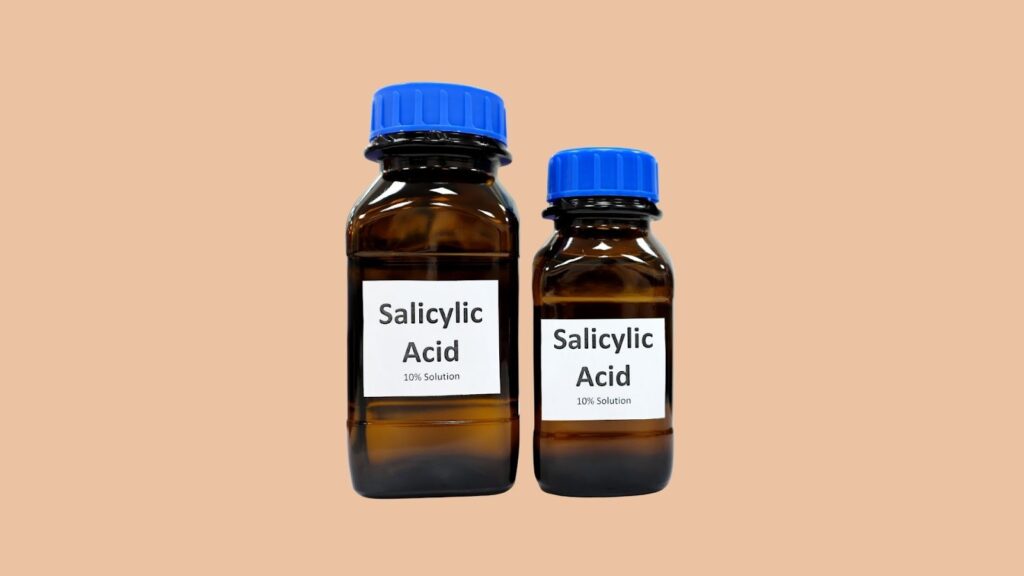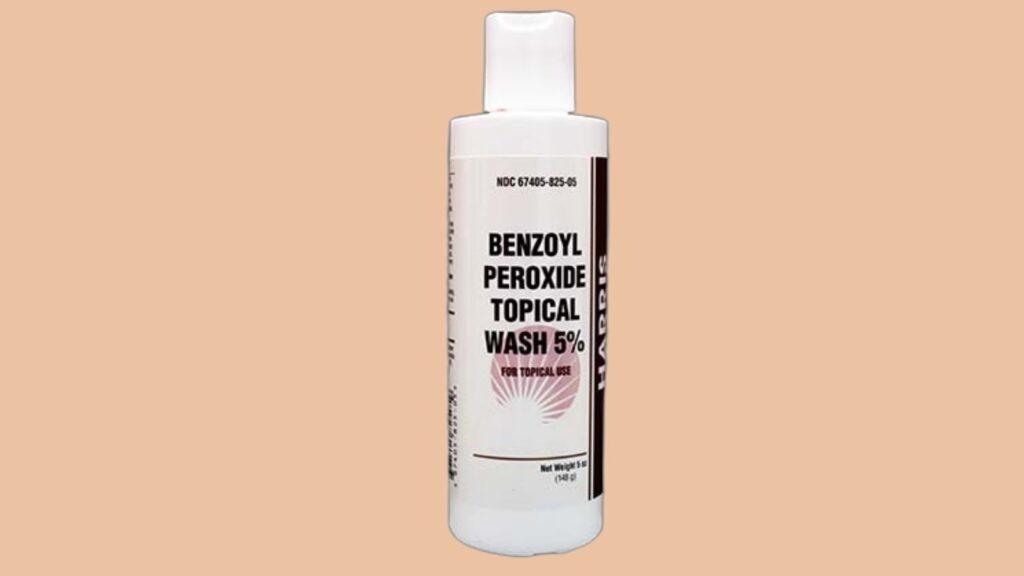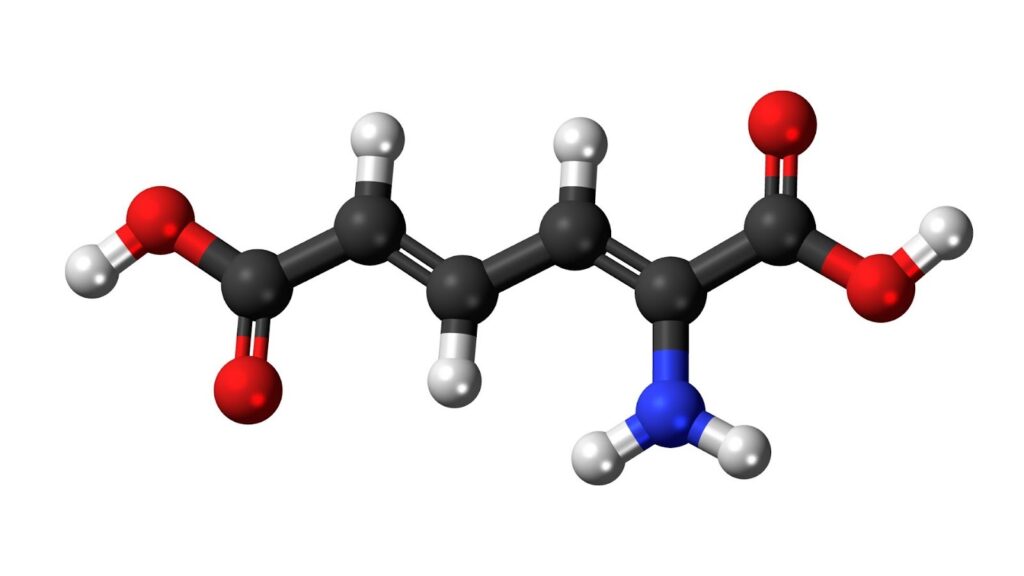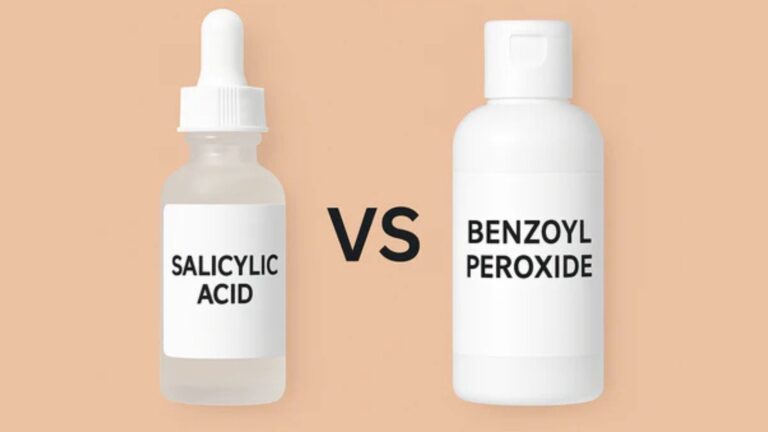If you’re tired of cycling through skincare products without seeing results, you’re not alone. When it comes to managing acne and breakouts, two of the most powerful and widely recommended active ingredients are salicylic acid and benzoyl peroxide. But which one is right for your skin type, breakout pattern, and long-term goals? In this deep dive, we’ll unpack the differences, benefits, and practical tips for using salicylic acid vs benzoyl peroxide — so you can pick with confidence, clear your skin, and maintain your glow.
Why Compare Salicylic Acid and Benzoyl Peroxide?
Acne is a complex skin issue. Whether you’re dealing with blackheads, whiteheads, red pustules or inflamed cysts, the underlying mechanisms differ. One key step to effective acne treatment is choosing the right active for your acne type, skin tolerance, and lifestyle.
Here’s why this comparison matters:
- Many products include one or the other, and understanding their differences helps avoid ineffective combinations.
- Incorrect choice (e.g., using benzoyl peroxide for clogged pores only) can lead to irritation, slower progress or even make things worse.
- Knowing how to use each safely, and whether you can combine them, means you’ll get faster, clearer results.
In short: this comparison isn’t just academic — it’s practical. Let’s dig in.

What Is Salicylic Acid? And How It Works
Mechanism of Action
Salicylic acid is a beta hydroxy acid (BHA) that works mainly by penetrating pores, dissolving excess oil, dead skin cells, and helping to unclog congested follicles. It’s oil-soluble, making it effective for clogged pores and milder forms of acne.
Best For These Conditions
- Blackheads and whiteheads (comedonal acne)
- Oily or combination skin with visible pores
- Early stage breakouts or frequent small blemishes
- Skin types tolerant of gentle exfoliation but may not tolerate stronger antibacterials
According to Healthline:
“Salicylic acid is more effective for blackheads and whiteheads.”
Typical Use & Strengths
- Common over-the-counter strengths: 0.5–2% (in cleansers), up to ~6% in stronger leave-on treatments.
- Works best when used consistently (daily or every other day) in a gentle skincare routine.
- Since it exfoliates, pairing with gentle moisturizer and sunscreen is important — especially if your skin becomes sensitive.
Pros & Cons
Pros:
- Targets pore congestion and oil-related breakouts effectively
- Generally better tolerated for milder acne and sensitive skin
- Can be integrated easily into many routines
Cons:
- Less effective on heavily inflamed or pustular acne (where bacteria and inflammation dominate)
- Can cause dryness, flaking or irritation if over-used
- Results may take several weeks to become noticeable

What Is Benzoyl Peroxide? And How It Works
Mechanism of Action
Benzoyl peroxide is a topical antibacterial and keratolytic agent. It works by releasing oxygen free radicals which kill the acne-causing bacteria ( Cutibacterium acnes ) in the follicle, and also helps reduce oil and inflammation.
Best For These Conditions
- Inflamed red pimples, pustules, papules — classic “inflammatory acne”
- Breakouts that emerge rapidly and aggressively
- Situations where bacteria play a key role in the breakout cycle
- Individuals who can tolerate stronger antibacterial treatments
According to Real Simple:
“Benzoyl peroxide fights acne at the source by killing acne-causing bacteria, while salicylic acid focuses on a cause of acne (clogged pores).”
Typical Use & Strengths
- Over-the-counter concentrations: commonly 2.5% up to 10%. Some evidence shows that lower concentrations can be just as effective with fewer side-effects.
- Often used once or twice daily, or as a spot treatment for flare-ups.
- Important: benzoyl peroxide can bleach fabrics (towels, pillowcases, clothing) and irritate skin if over-used.
Pros & Cons
Pros:
- Very effective for inflammatory/acne-bacterial driven breakouts
- Doesn’t appear to cause bacterial antibiotic resistance (unlike some antibiotics)
- Can produce faster visible results in the right breakout type
Cons:
- More likely to cause irritation, dryness, skin peeling or redness — especially early on
- Fabric bleaching risk — must be careful with towels/clothes
- Not ideal for pore-clogging/dormant blackhead-dominant acne
Salicylic Acid vs Benzoyl Peroxide – Side-by-Side Comparison
How to Choose Between Salicylic Acid and Benzoyl Peroxide
Assess Your Acne Type
- Do you primarily have blackheads or whiteheads and visible clogged pores? → Salicylic Acid might be the best starting point.
- Do you have red, inflamed pimples, pustules or painful breakouts? → Benzoyl Peroxide may be more effective.
- Is your acne a mix of both types or you’re unsure? Consider alternating or consulting a dermatologist.
Consider Your Skin Tolerance & Lifestyle
- Sensitive skin or dryness? Go slower, start with lower strength salicylic acid.
- Active lifestyle with clothing changes, towel use, and quick sweat sessions? Be cautious with benzoyl peroxide’s bleach-risk.
- Do you already use strong actives (retinoids, exfoliants)? Pick one active and layer carefully to avoid over-irritation.
How to Introduce One into Your Routine
- Cleanse skin with a gentle, non-irritating cleanser.
- Patch test on a small area for 3-5 days to check tolerance.
- Choose your active (salicylic or benzoyl) and apply as per instructions (e.g., leave-on gel, teens cleanser, etc.).
- Follow with a non-comedogenic moisturizer.
- Always apply broad-spectrum sunscreen SPF 30+ as breakouts and actives make skin sensitive.
- Monitor for dryness, redness or flaking — adjust frequency if needed.
When to Use Both Ingredients
Some skincare professionals may recommend using both salicylic acid and benzoyl peroxide, but not necessarily at the same time or same product. Alternating days or using one in the morning and one at night can work.” However, combining them carelessly can increase irritation. Many dermatologists caution against layering them simultaneously.

Practical Tips and Example Routines
Routine Example 1: Blackheads + Oily Skin (Salicylic Acid Focus)
- Morning: Cleanser → 2% salicylic acid leave-on → lightweight oil-free moisturizer → SPF 30+.
- Evening: Cleanser → salicylic acid product (if tolerated) or gentle treatment → moisturizer.
- Weekly: Use a gentle clay mask / exfoliant once a week to support pore-clearing.
Routine Example 2: Inflamed Breakouts (Benzoyl Peroxide Focus)
- Morning: Cleanser → moisturizer → SPF 30+.
- Evening: Cleanser → 5% benzoyl peroxide gel on affected areas → moisturizer.
- Use towels/pillowcases you don’t mind bleaching; avoid coloured fabrics near skin while BP is active.
Routine Example 3: Combination Acne (Alternate Use)
- Morning: Cleanser → 2% salicylic acid serum → moisturizer → SPF.
- Evening (Day A): Cleanser → benzoyl peroxide gel → moisturizer.
- Evening (Day B): Cleanser → plain moisturizer (give skin break).
- Monitor skin for signs of irritation, adjust accordingly.
Additional Smart Practices
- Always apply sunscreen — both actives increase sensitivity to UV.
- Moisturize daily — even oily skin benefits from hydration to support skin barrier.
- Avoid picking or popping — makes breakouts worse and increases risk of scarring.
- Be patient: visible improvements may take 4–8 weeks or more. Medical News Today
- If you experience excessive irritation, redness or no improvement after 2–3 months, consult a dermatologist.
Common Mistakes to Avoid
- Using too many strong actives at once: Can lead to irritation, layering oils/exfoliants/retinoids with BP and SA is risky. INKEY UK
- Skipping patch tests: Especially important with benzoyl peroxide (bleaching, irritation risk).
- Neglecting sunscreen: Using acne actives while skipping SPF increases risk of pigmentation and damage.
- Expecting overnight results: Both actives require consistent usage for sustained effect. Medical News Today
- Ignoring skincare routine basics: Cleanser, moisturizer, sunscreen — the actives only work if skin barrier is supported.
When to Seek Professional Help
If you experience:
- Deep cysts, nodules, or scars forming
- No noticeable improvement after 3-4 months of consistent use
- Severe irritation, burning, or allergic reaction
- Acne persists into adulthood or under hormonal influences
Then it’s time for a dermatologist consultation. They may recommend prescription options, combination therapies, or professional procedures to complement your routines.
Conclusion: Make the Right Choice for Your Skin
In your “breakout battle” between salicylic acid vs benzoyl peroxide, there’s no one-size-fits-all winner. Instead, the key is matching the right active to your acne type, skin tolerance and lifestyle:
- Choose salicylic acid when your primary concern is clogged pores, blackheads, whiteheads, and you have oily/combination or sensitive skin.
- Choose benzoyl peroxide when you’re dealing with red, inflamed pimples, pustules or bacterial breakout patterns — and are ready to tolerate a stronger treatment.
- Consider alternating or combining (with caution) for mixed acne types, always monitoring for irritation.
By selecting the correct ingredient, using it responsibly, and pairing it with foundational skincare (moisturizer + SPF + gentle cleanser), you’ll be well on your way to clearer, healthier skin.


